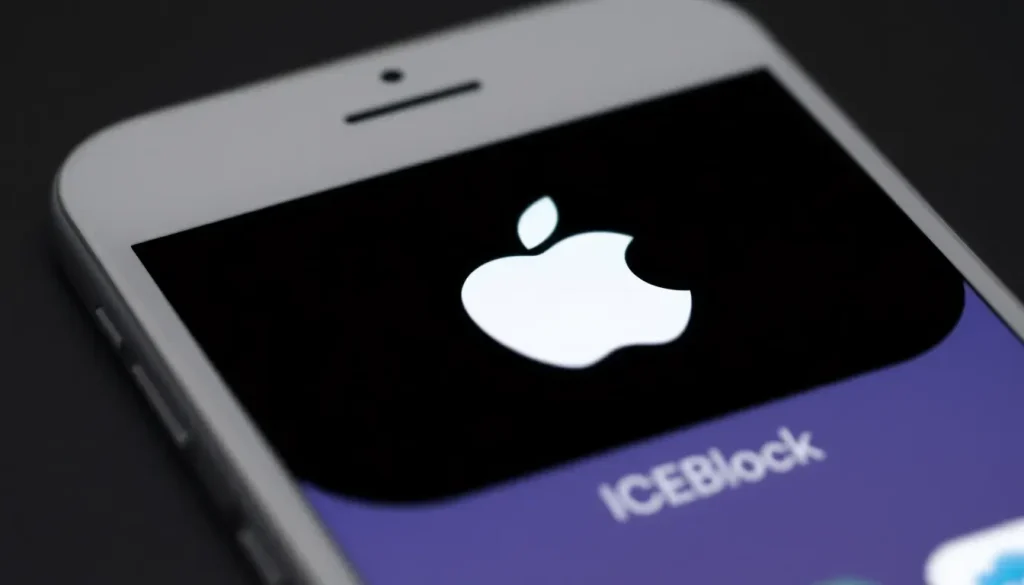Apple removes ICEBlock from App Store after DOJ pressure

The recent decision by Apple to remove the ICEBlock app from its App Store has sparked a significant debate about censorship, safety, and the responsibilities of tech companies in monitoring their platforms. This situation raises essential questions about the balance between user safety and freedom of expression in today's digital landscape.
Apple removes ICEBlock after pressure from law enforcement
ICEBlock, an app designed to notify users about the presence of Immigration and Customs Enforcement (ICE) agents, has recently been pulled from the App Store. This action came at the request of U.S. Attorney General Pam Bondi, highlighting the tension between technology, law enforcement, and civil rights.
Notably, ICEBlock gained notoriety by becoming the top social networking app on the App Store after the White House publicly condemned it. This condemnation was coupled with threats from Bondi, suggesting that the app's developer, Joshua Aaron, should "watch out," as law enforcement was scrutinizing him closely.
As the situation unfolded, the urgency surrounding ICE enforcement actions intensified. A particularly tragic incident occurred last month in Dallas, where an ICE detainee was killed alongside two others who sustained critical injuries—one of whom later died from their wounds. Reports indicate that the shooter, Joshua Jahn, had looked for apps like ICEBlock on his phone shortly before the incident, raising alarms among officials.
This tragic event seemingly provided the Attorney General with sufficient justification to compel Apple to remove ICEBlock from its platform. As outlined in a statement to Fox Business, Bondi stated:
“We reached out to Apple today demanding they remove the ICEBlock app from their App Store — and Apple did so. (…) ICEBlock is designed to put ICE agents at risk just for doing their jobs, and violence against law enforcement is an intolerable red line that cannot be crossed.”
In response to its removal, Apple justified its decision by asserting:
“We created the App Store to be a safe and trusted place to discover apps. Based on information we’ve received from law enforcement about the safety risks associated with ICEBlock, we have removed it and similar apps from the App Store.”
Background on ICEBlock and its significance
ICEBlock emerged as a tool for those concerned about immigration enforcement, allowing users to report sightings of ICE agents. Its rise in popularity can be attributed to growing apprehension regarding ICE operations under the current administration, which many view as aggressive and sometimes violent.
The app's developer, Joshua Aaron, expressed his disappointment at the removal, arguing that capitulating to what he termed an "authoritarian regime" was a misguided decision. He claimed that the assertion that ICEBlock endangered law enforcement officers was "patently false." His dedication to the app's mission reflects the ongoing struggle between those advocating for immigrant rights and governmental bodies enforcing immigration laws.
Why do companies like Apple remove apps from their platforms?
The decision to remove apps from digital marketplaces is not taken lightly and typically involves various factors. Companies like Apple consider:
- Legal pressures: Compliance with government requests can often lead to app removals, especially when public safety is cited.
- User safety: Apps that are perceived to incite violence or harassment against individuals can be taken down to prevent potential harm.
- Reputation management: Companies strive to maintain their public image and user trust, which can be jeopardized by controversial apps.
- Internal policies: Each platform has guidelines governing acceptable content, and apps that violate these can be subject to removal.
Impact on developers and users
The removal of ICEBlock has broader implications for developers and users alike. For developers, this sets a precedent about how their apps can be impacted by external pressures. For users, it raises concerns about access to information and tools that may be crucial for their safety or activism.
Joshua Aaron's reaction underscores a critical tension in the digital age: the battle for digital rights versus the perceived necessity of public safety. This situation is emblematic of a larger issue involving tech companies grappling with their role in moderating content while balancing user autonomy.
Public reaction and ongoing debates
The public's reaction to ICEBlock's removal has been mixed, reflecting deep societal divisions on immigration and law enforcement. Advocates for immigrant rights argue that the app is a vital resource for communities under threat from ICE actions, whereas supporters of law enforcement see it as a tool that undermines safety and security.
This incident feeds into a broader discourse on the power of technology companies and their responsibility towards users. Questions such as the following remain at the forefront:
- How far should tech companies go in regulating content on their platforms?
- What safeguards exist to prevent unjustified censorship?
- Are users losing access to essential tools under the guise of safety?
As society grapples with these questions, the case of ICEBlock serves as a poignant example of the complexities at the intersection of technology, law, and civil liberties.
For those interested in a deeper understanding of this situation, you may find this video insightful:
Future implications for app regulation
The implications of the ICEBlock removal extend beyond this single incident and could signal a shift in how apps related to sensitive topics are treated in the future. As technology evolves, so too do the challenges of regulating content online. The following considerations may shape this landscape:
- Increased scrutiny: Apps that deal with contentious issues may face heightened oversight from both government and tech companies.
- Emerging alternatives: Developers may seek to innovate new ways to create similar tools while circumventing potential bans.
- Community response: Users may mobilize to support or oppose such actions, influencing public policy and corporate decisions.
As the digital landscape continues to evolve, the balance between safety and freedom will remain a pivotal issue for both users and developers. The case of ICEBlock exemplifies the ongoing struggle for control over digital rights in an increasingly complex world.




Leave a Reply